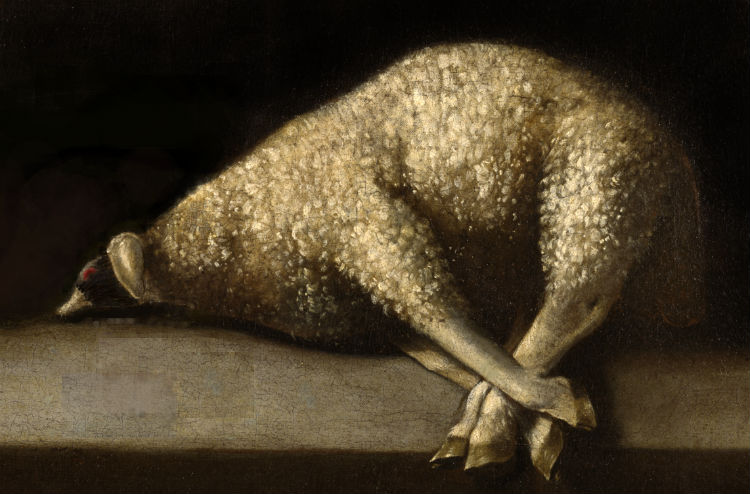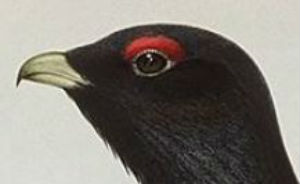Sheep × Capercaillie
Mammalian Hybrids
 Reconstruction of an alleged capercaillie-sheep hybrid, based on the description in the report quoted below (digitally converted by E. M. McCarthy from The Sacrificial Lamb by Josefa de Óbidos).
Reconstruction of an alleged capercaillie-sheep hybrid, based on the description in the report quoted below (digitally converted by E. M. McCarthy from The Sacrificial Lamb by Josefa de Óbidos).
|
Sir, to leave things out of a book, merely because people tell you it will not be believed, is meanness.
—Samuel Johnson
|
 Face of a capercaillie
Face of a capercaillie
Note: Any claim that hybrids can actually be produced from this disparate and poorly documented cross would require confirmation from a specimen.
In 1828 the Austrian magazine Jurende’s vaterländischer Pilger (vol. 15, p. 373, #9) reported that a sheep had given birth to a lamb with the face of a Capercaillie. In translation, the report reads as follows:
The Western Capercaillie (Tetrao urogallus), which is native to the forests of mountainous and boreal regions of much of western Eurasia is the world’s largest grouse. It reaches a maximum weight of about 7.2 kg (16 lb), and so might be large enough to mate with a ewe, especially if she were lying down. However, like other galliform birds, capercaillies lack a phallus and have only a cloaca, which would seem to hamper, though not entirely to preclude, insemination.
By the same author: Handbook of Avian Hybrids of the World, Oxford University Press (2006).
Most shared on Macroevolution.net:
Human Origins: Are we hybrids?
On the Origins of New Forms of Life
Mammalian Hybrids
Cat-rabbit Hybrids: Fact or fiction?
Famous Biologists
Dog-cow Hybrids
Georges Cuvier: A Biography
Prothero: A Rebuttal
Branches of Biology
Dog-fox Hybrids